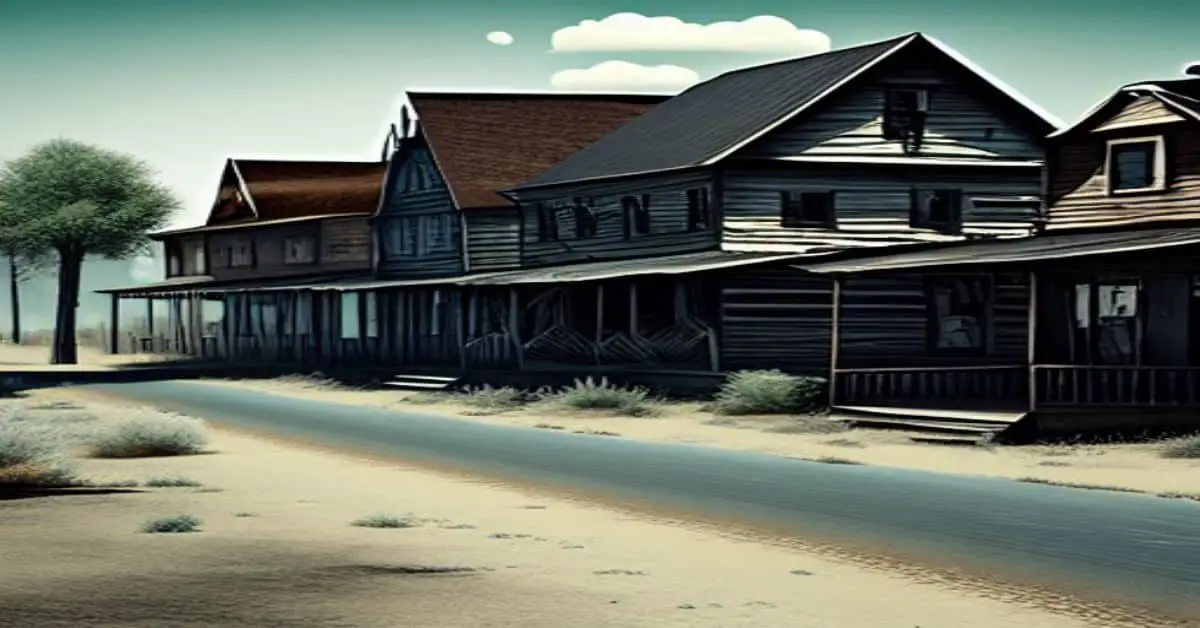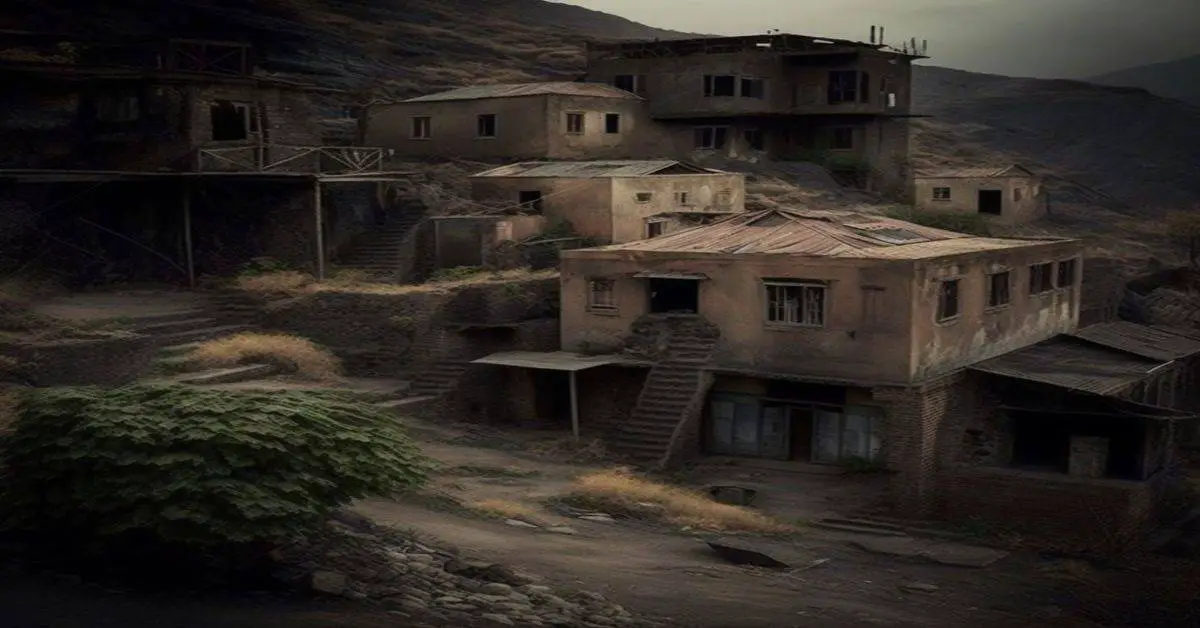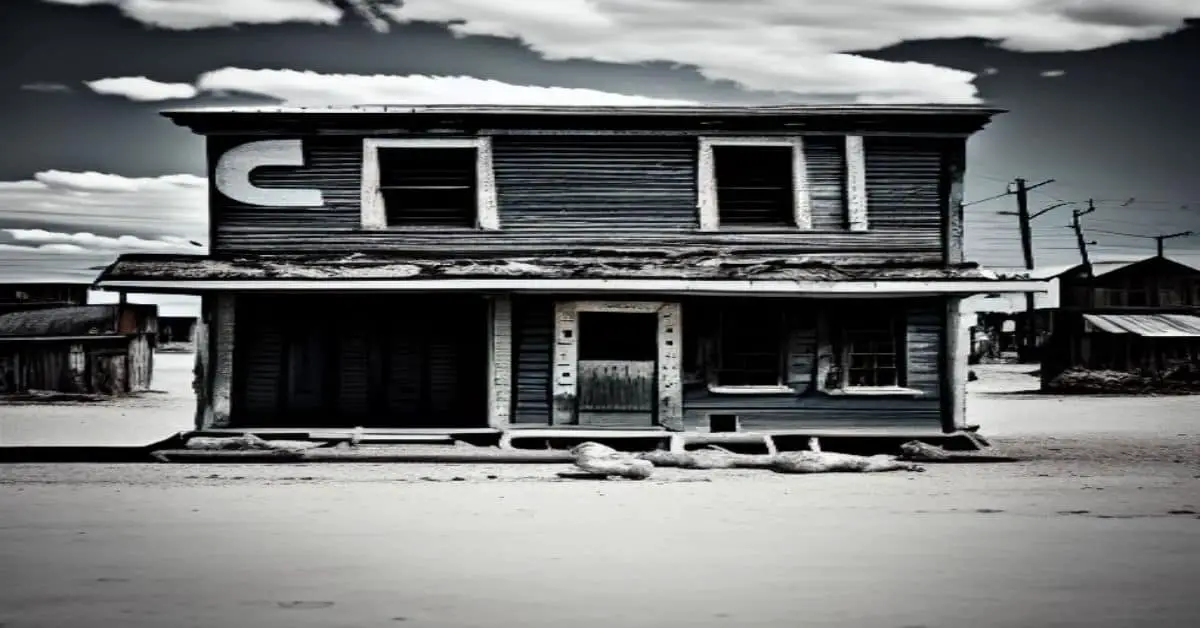Atwood, OH
County:
Zip Code:
Latitude / Longitude:
Elevation:
Time Zone:
Eastern (EST) (UTC-5)
Established:
Disestablished:
Comments:
Remains:
Current Status:
Remarks:
Blowville, OH
County:
Clermont
Zip Code:
Latitude / Longitude:
39° 5′ 52 N, 84° 2′ 44 W
Elevation:
Time Zone:
Eastern (EST) (UTC-5)
Established:
1881
Disestablished:
1905
Comments:
Blowville is an unincorporated community in Clermont County, in the U.S. state of Ohio.
Remains:
A post office called Blowville was established in 1881 and remained in operation until 1905. Besides the post office, Blowville had a country store, which opened in 1872.
Current Status:
unincorporated
Remarks:
Blue Ball, OH
County:
Zip Code:
Latitude / Longitude:
39° 29′ 36 N, 84° 20′ 11 W
Elevation:
Time Zone:
Eastern (EST) (UTC-5)
Established:
1820
Disestablished:
Comments:
Blue Ball is a town in the southwestern part of the U.S. state of Ohio that was established in 1820 at the intersection of the Dixie Highway (later U.S. Route 25). “The Blue Ball hung at the intersection of where the Historic Toddle Inn is located… This was located just several hundred feet from what is said to be State Route 122.” and what became State Route 122.
Remains:
According to local legend, the town was on a busy stagecoach stop between Dayton and Cincinnati along the Dixie Highway but kept being passed by because most stagecoach drivers were illiterate and could not read the sign with the town’s name on it. So, in 1862, the town council changed the municipal name to reflect a landmark, a blue-colored metal sphere that was suspended above the intersection of the two highways at the heart of town. A modern successor to that blue ball still hangs on Dixie Highway. It was granted a post office, since closed, in 1844.
Current Status:
Blue Ball was annexed by nearby Middletown in 1993
Remarks:
It was originally called “Guilford” after Nathaniel Guilford, a prominent state politician at the time. Blue Ball straddles the line between Butler and Warren Counties and was in Lemon Township, Butler County, Ohio and Franklin Township, Warren County, Ohio.
Boston, OH
County:
Summit
Zip Code:
Latitude / Longitude:
41° 15′ 48 N, 81° 33′ 34 W
Elevation:
Time Zone:
Eastern (EST) (UTC-5)
Established:
1820
Disestablished:
Comments:
The community takes its name from Boston Township. The first settlement at Boston was made in 1820. A sawmill was built at Boston in about 1821. An early variant name was Boston Mills. A post office called Boston was established in 1825, and remained in operation until 1957.
Remains:
Current Status:
Boston is an unincorporated community in Summit County, in the U.S. state of Ohio.
Remarks:
Claylick, OH
County:
Licking
Zip Code:
Latitude / Longitude:
40° 3′ 30 N, 82° 17′ 14 W
Elevation:
Time Zone:
Eastern (EST) (UTC-5)
Established:
1852
Disestablished:
1918
Comments:
Claylick is a former town in Licking County, in the U.S. state of Ohio. The GNIS classifies it as a populated place.
Remains:
Current Status:
The community took its name from nearby Clay Lick Creek. A post office called Clay Lick was established in 1852, and remained in operation until 1918.
Remarks:
Claylick once had a mill and a store.
Elk Lick, OH
County:
Clermont
Zip Code:
Latitude / Longitude:
39° 1′ 36 N, 84° 7′ 47 W
Elevation:
Time Zone:
Eastern (EST) (UTC-5)
Established:
Disestablished:
Comments:
Elk Lick is an extinct town in Clermont County, in the U.S. state of Ohio. The GNIS classifies it as a populated place.
Remains:
Current Status:
extinct town
Remarks:
Elk Lick was named for a mineral lick of the same name.
Hibernia, OH
County:
Zip Code:
Latitude / Longitude:
39° 57′ 7.52 N, 82° 50′ 57.8 W
Elevation:
Time Zone:
Eastern (EST) (UTC-5)
Established:
1849
Disestablished:
1857
Comments:
Located within the modern-day apartment complex is a cemetery known as Carlisle Garden. The occupants of Carlisle Garden are believed to be the residents of the old village. The oldest stone dates from 1810, and the most recent from 1877. A number of veterans from the War of 1812 and the Civil War are buried there also. The staff of the apartment complex still maintain the plots.
Remains:
Hibernia was a village located just outside modern-day Reynoldsburg, Ohio. Today, there is a large apartment complex on the land that still bears the name “Hibernia.” The apartments occupy the southeast corner of East Main Street and Noe-Bixby Road, just inside the I-270 corridor, on the east side of Columbus.
Current Status:
Around 1840, a couple of years after the National Road was established in Ohio, property owner Thomas Armstrong “disposed of” a few lots along the road, and four or five families built homes there. The grouping eventually got its own post office on August 25, 1849, and began to be referred to by name. Although the post office closed in January 1857, the town lingered in some form. Hibernia was a listed stop on the National Road until around 1900, and as recently as the 1940s, Columbus bus lines on Route 40 East had a stop in Hibernia before arriving in Reynoldsburg.
Remarks:
Ingham, OH
County:
Vinton
Zip Code:
Latitude / Longitude:
39°18.695′N 82°18.05′W / 39.311583°N 82.30083°W / 39.311583 -82.30083
Elevation:
Time Zone:
Eastern (EST) (UTC-5)
Established:
1903
Disestablished:
1904
Comments:
Ingham (also known as Ingham Station or Ingham’s Station) is a ghost town in southeastern Brown Township, Vinton County, Ohio, United States.
Remains:
Ingham had its start when the railroad was extended to the mines at that point. William N. Jaynes was postmaster from March 25, 1903, until mail was discontinued on April 30, 1904, when it was sent to the Mineral post office.
Current Status:
Remarks:
Knockemstiff, OH
County:
Ross
Zip Code:
Latitude / Longitude:
39° 16′ 4.24 N, 83° 7′ 8.66 W
Elevation:
692 ft
Time Zone:
Eastern (EST) (UTC-5)
Established:
Disestablished:
Comments:
A number of stories exist to explain the community’s unusual name. One claims that a tremendous brawl broke out when the community was in its infancy. More humorous is the tale of a woman who confronted her preacher during a Sunday morning worship service, informing the clergyman that her husband was cheating on her. She wanted the preacher’s advice, and his response was straightforward: “Knock ’em stiff.” A variant of the story is that a preacher came across two women fighting over a man, and advised the women that the man was not likely to be worth their trouble and that someone should “knock him stiff.” Another explanation is that it was named from one of the many slang terms used for moonshine. Local residents say that moonshining was formerly common in the area surrounding the community, which had a reputation for rowdiness.
Remains:
Knockemstiff, also known as Glenn Shade or Shady Glenn, is a small community located in northeastern Huntington Township, Ross County, Ohio, United States, to the southwest of Chillicothe. It sits at an elevation of 692 ft. (211 m). The Geographic Names Information System gives Knockemstiff’s coordinates as 39°16’04 N, 83°07’09 W, placing the original hamlet at the junction of Black Run Road (County Road 156) and Shady Glen Road. A number of more recent rural residences now occupy the same area.
Current Status:
Remarks:
The community’s name is also the title of a collection of short stories written by Ross County native, Donald Ray Pollock.
Moonville, OH
County:
Vinton
Zip Code:
Latitude / Longitude:
39° 18′ 24.12 N, 82° 19′ 16.68 W
Elevation:
Time Zone:
Eastern (EST) (UTC-5)
Established:
Disestablished:
Comments:
In 1856, the Marietta and Cincinnati Railroad (M&C) was pushing through southeastern Ohio to reach Cincinnati. William Cutler, the owner of the fledgling railroad, was having financial problems and was looking to streamline and conserve money while building the railroad.
Remains:
Moonville is a ghost town in southeastern Brown Township, Vinton County, Ohio, United States. Little remains of this former mining community except for a few foundations, a cemetery, and an abandoned railroad tunnel which is the subject of numerous ghost stories.
Current Status:
A man named Samuel Coe convinced Cutler to build the railroad on his large property for free, in exchange for a favor. The railroad would be routed through Coe’s land in order to haul coal and clay off of his property. This move saved the railroad a great deal by reducing the distance the railroad traveled to Cincinnati.
Remarks:
Several coal mines sprang up, and it was found that there was a rich supply of it in the immediate area. Soon the mining town of Moonville was born.
New Burlington, OH
County:
Clinton
Zip Code:
Latitude / Longitude:
39° 33′ 43 N, 83° 57′ 56 W
Elevation:
Time Zone:
Eastern (EST) (UTC-5)
Established:
1833
Disestablished:
Comments:
New Burlington is a former town located in Chester Township in the northwestern corner of Clinton County, Ohio off state route 380. The GNIS classifies it as a populated place. It was acquired by the United States federal government when Caesar Creek was dammed and a reservoir created in the 1970s.
Remains:
New Burlington was laid out in 1833, and named after Burlington, North Carolina, the native home of a share of the first settlers. A post office called New Burlington was established in 1837 and remained in operation until 1971.
Current Status:
Remarks:
New Burlington was a “station” on the Underground Railroad.
New Hampton, OH
County:
Madison
Zip Code:
Latitude / Longitude:
39°56′23″N 83°16′9″W / 39.93972°N 83.26917°W / 39.93972
Elevation:
Time Zone:
Eastern (EST) (UTC-5)
Established:
1822
Disestablished:
Comments:
Founded in 1822, the village consisted of 93 lots with eight streets. Several businesses, a Baptist church, and a post office were located in the community. The village declined after the National Road was built a short distance away to the north, as residents preferred to live along the new road. With the foundation of the town of Jefferson (now known as West Jefferson), the community was abandoned; the last building to be used was the Baptist church, which was abandoned after a new Baptist church was organized in the town of Jefferson around 1840.
Remains:
New Hampton was a village in Jefferson Township, Madison County, Ohio, United States. It is now part of the village of West Jefferson.
Current Status:
All that remains of the village is a cemetery and part of the village’s Main Street.
Remarks:
Newville, OH
County:
Richland
Zip Code:
Latitude / Longitude:
40°37′49″N 82°23′08″W / 40.63028°N 82.38556°W / 40.63028
Elevation:
Time Zone:
Eastern (EST) (UTC-5)
Established:
1823
Disestablished:
Comments:
Newville was founded by John Frederick Herring, and was platted in December 1823. It is situated upon section three, Worthington Township. Abraham Nye was one of the first settlers there and was instrumental in inducing Mr. Herring to lay out the town. Newville lies in a small valley at the confluence of Slater’s Run with the Clearfork of the Mohican River, nearly surrounded by tree-covered hills.
Remains:
In the 1940s, the U.S. Corps of Engineers built a dam on the Mohican river, that would under some circumstances, cause the town to be flooded, and it was ordered abandoned. Some of the foundations and buildings are still standing in the forest just west of the lake.
Current Status:
Newville is a now-defunct town located near what is now Pleasant Hill Lake, in northeastern Worthington Township, Richland County, Ohio, United States.
Remarks:
The first settlers in Newville and vicinity were John Frederick Herring, Abraham Nye, Michael Hogan, Daniel Carpenter, George Armentrout and Luther Richard. Abraham Nye was the first tavern keeper, Daniel Stoner the first blacksmith and Michael Hogan the first merchant. Newville was named after Newville, Pennsylvania, the native place of the founder of the town.
Oreton, OH
County:
Vinton
Zip Code:
Latitude / Longitude:
39°9′50″N 82°24′46″W / 39.16389°N 82.41278°W / 39.16389
Elevation:
Time Zone:
Eastern (EST) (UTC-5)
Established:
Disestablished:
Comments:
Oreton was a New York Coal Company mining town. The town had a post office from 1880 to 1950, as well as a church (Azariah McManis was the caretaker), and as many as 70 houses for the miners and families, most of them built by a Bert Harder. There are recorded births as early as 1853.
Remains:
Although Oreton was a town for over 100 years, the town never had a cemetery. Burials took place in nearby towns, several miles away. Oreton was originally known as Aleshire, according to postal records.
Current Status:
Oreton is a ghost town in eastern Vinton Township, Vinton County, Ohio, United States, located along State Route 160. Oreton was a small mining community. Today, all that remains are the crumbled ruins of the iron furnace, a few concrete foundations, and the brick safe of Dave Ebert’s company store.
Remarks:
A number of coal and iron ore mines were in the area. There was also an iron furnace that operated in the last half of the 1800s. Superintendent of the Eagle’s Furnace was Samuel T. Benner, a Civil War veteran of Company L, 12th Ohio Cavalry.
Providence, OH
County:
Lucas
Zip Code:
Latitude / Longitude:
41°25′05″N 83°52′20″W / 41.41806°N 83.87222°W / 41.41806
Elevation:
Time Zone:
Eastern (EST) (UTC-5)
Established:
1816
Disestablished:
Comments:
The village of Providence was founded by a French Canadian, Peter Manor, who was the first white man to settle upriver on the Maumee River away from Lake Erie. He arrived there in 1816 in order to establish a fur trading post for the North West Fur Company, then based in Montreal, Canada. But the United States prohibited Canadian traders from operating below the border and he was closed down. In 1822, Manor had a sawmill erected next to the river, and a gristmill was built in 1835. This was about 24 miles from the river’s mouth on Maumee Bay, where there was still an Odawa people village, part of a 34-square mile reserve on the south side of the river.
Remains:
Providence is a ghost town on the north side of the Maumee River in southern Providence Township, Lucas County, Ohio, United States, about 24 miles (39 km) southwest of Toledo. After suffering a destructive fire and a cholera epidemic in the mid-19th century, the village was abandoned. In this period, canal traffic had also fallen off. Many buildings and structures remain standing in the Providence area. Some have been restored.
Current Status:
The area is now maintained as Providence Metropark of Toledo, featuring numerous elements of the canal era, including a mule-drawn canal boat on a restored section of the Miami and Erie Canal, and an operating saw and gristmill.
Remarks:
A catastrophic fire swept through the village in 1846, destroying most of the many wooden buildings in the central business district. The destroyed buildings were not rebuilt and the town never recovered. In 1854 river travelers brought a cholera epidemic, also spread by contaminated water. Those who survived rapidly left Providence, so fast that most of their possessions were left behind. The remaining structures were eventually destroyed or moved, and the land plats disappeared. On October 28, 1928, Lucas County officially removed Providence from its records. The remaining buildings, the church, and the saw and gristmill have been designated as a historic district by the Department of the Interior.
Revenge, OH
County:
Zip Code:
Latitude / Longitude:
Elevation:
Time Zone:
Eastern (EST) (UTC-5)
Established:
Disestablished:
Comments:
Remains:
Current Status:
Remarks:
Rumley, OH
County:
Zip Code:
Latitude / Longitude:
Elevation:
Time Zone:
Eastern (EST) (UTC-5)
Established:
Disestablished:
Comments:
Remains:
Current Status:
Remarks:
Rural Hill, OH
County:
Zip Code:
Latitude / Longitude:
Elevation:
Time Zone:
Eastern (EST) (UTC-5)
Established:
Disestablished:
Comments:
Remains:
Current Status:
Remarks:
San Toy, OH
County:
Perry
Zip Code:
Latitude / Longitude:
39° 39′ 22 N, 82° 2′ 9 W
Elevation:
Time Zone:
Eastern (EST) (UTC-5)
Established:
Disestablished:
Comments:
San Toy is a ghost town in southeastern Bearfield Township, Perry County, Ohio, Perry County, Ohio, United States. A flourishing community in the early 20th century, it was a coal town created by the Sunday Creek Coal Company.
Remains:
San Toy quickly outgrew its coal mining town size. At its peak, it had a baseball team, several saloons, a theater, a hospital, a post office, and many other various stores and schools. San Toy was practically a relic from the Wild West that grew out of the Appalachian foothills. It was a rough town where people frequently died in the saloons and streets. There were many deadly mining accidents as well. According to Addison Vanhorn, a local, “It was a tough place. If you took a walk up the railroad tracks with a lantern, somebody’d shoot it out.” San Toy was a big moonshine town during the prohibition era.
Current Status:
According to the 1930 census, San Toy was the town in the United States whose population had decreased the most per capita since the previous census (976 in 1920 to just 128 in 1930). In 1931, 17 of the 19 registered voters voted to abandon the town. Today approximately 50 people live in the area that was once San Toy. Many foundations and roads of the once busy town remain. A local road is named in its honor.
Remarks:
On September 25, 1924, a group of disgruntled miners rolled a coal cart full of burning railroad ties into a mine. The subsequent fire destroyed the theater and hospital. The other mine in the town was closed down by Sunday Creek rather than update it.
Shaker Village, OH
County: Hamilton
Zip Code:
Latitude / Longitude:
Elevation:
Time Zone: Eastern (EST) (UTC-5)
Established:
Disestablished:
Comments:
Remains:
Current Status:
Remarks:
Sprucevale, OH
County:
Zip Code:
Latitude / Longitude:
Elevation:
Time Zone:
Eastern (EST) (UTC-5)
Established:
Disestablished:
Comments:
Remains:
Current Status:
Remarks:
Tadmor, OH
County:
Montgomery
Zip Code:
Latitude / Longitude:
39° 53′ 45 N, 84° 9′ 55 W
Elevation:
Time Zone:
Eastern (EST) (UTC-5)
Established:
1867
Disestablished:
1917
Comments:
A post office called Tadmer was established in 1867, the name was changed to Tadmor in 1884, and the post office closed in 1917.
Remains:
Besides the post office, Tadmor had a station on the Dayton and Michigan Railroad.
Current Status:
Tadmor is an extinct town in Montgomery County, in the U.S. state of Ohio is now within the Vandalia city limits.
Remarks:
Utopia, OH
County:
Clermont
Zip Code:
Latitude / Longitude:
38° 46′ 34 N, 84° 3′ 26 W
Elevation:
Time Zone:
Eastern (EST) (UTC-5)
Established:
1844
Disestablished:
Comments:
Utopia was founded in 1844 by the followers of Charles Fourier, after the failure of an earlier Fourierist phalanstère called the Clermont Phalanx. Fourier’s writings inspired his readers to create their own utopian society — hence the name “Utopia.” Within three years, the community broke up. It was soon reorganized by Josiah Warren, who founded the town as a means of a small cooperative community that could still carry out functions as the outside world. For instance, the town existed with a market economy and the belief in owning private property.
Remains:
Flood of 1847 – On the night of December 13, 1847, the Ohio River had flooded its banks dramatically and was getting dangerously close to the town hall. However, people were still seeking shelter in the hall because their houses were becoming flooded. During a party that was being held at the hall that evening, the river, many feet above flood stage, washed out the south wall of the building, sweeping out a large number of Spiritualists. Some who were swept away did survive, but most drowned or were overcome by hypothermia in the icy river.
Current Status:
Utopia is an unincorporated community in far southern Franklin Township, Clermont County, Ohio, United States, along the banks of the Ohio River. Utopia has been referred to as a “ghost town” although there are still people who live there.
Remarks:
First settlers – The sect believed that the world would enter a 35,000-year-long period of peace and that in order to achieve enlightenment, they must live in communes with one another. Fourier’s followers had attracted several families to live in Utopia for the fee of $25 a year, and in turn, each family would receive a wooden house on a small parcel of land. Second settlers – The land that was owned by the sect was then sold to John O. Wattles, the leader of another group of Spiritualists. Despite the warnings of the locals, Wattles and the Spiritualists moved the dining hall/town hall brick by brick to the river’s edge. The move was completed in December 1847 mere days before one of the biggest floods of the 19th century.
Vinton Furnace, OH
County:
Zip Code:
Latitude / Longitude:
Elevation:
Time Zone: Eastern (EST) (UTC-5)
Established:
Disestablished:
Comments:
Remains:
Current Status:
Remarks:
Winchester, OH
County:
Adams
Zip Code:
45697
Latitude / Longitude:
40°36′34″N 82°24′19″W / 40.60944°N 82.40528°W / 40.60944
Elevation:
906 ft (276 m)
Time Zone:
Eastern (EST) (UTC-5)
Established:
1815
Disestablished:
Comments:
Winchester was laid out in 1815 by Joseph Darlinton. It was named for Darlinton’s former hometown of Winchester, Virginia.
Remains:
State Route 136 passes through Winchester. Winchester is adjacent to Ohio State Route 32, a four-lane divided highway known as the Appalachian Highway. The Appalachian Highway links Winchester to Cincinnati. A traffic signal is located at the intersection of Routes 32 and 136.
Current Status:
Winchester is a village in Adams County, Ohio, United States. The population was 1,051 at the 2010 census. The name of the surrounding township is also named Winchester.
Remarks:
There is also an Ohio Historic Site in Winchester, the Dr. A. C. Lewis House. The Dr. A. C. Lewis home was built between 1845 and 1848. Dr. Lewis is considered the first resident physician of Winchester. He was a known abolitionist and used the house as a station on the underground railroad.
Wonderland, OH
County:
Zip Code:
Latitude / Longitude: 40° 0′ 10 N, 82° 52′ 15 W
Elevation:
Time Zone: Eastern (EST) (UTC-5)
Established:
Disestablished:
Comments: Wonderland was a United States community of summer cottages, just outside the Columbus suburb of Gahanna, near a bend in Big Walnut Creek. By the beginning of the Depression, many of the summer cottages were winterized and became year-round homes. In the mid-1980s Port Columbus International Airport planned an extension of their north runway, and because of the need for a clear approach, the airport authority was given the go-ahead to buy out the remaining property owners still living in Wonderland.
Remains: The remaining structures were razed, and the area fenced off. Because its congregation was still using its building, and the church was at the eastern edge of the land, Wonderland Community Church, on Friendship Drive, next to the interchange of Interstate 270 and Hamilton Road was allowed to remain.
Current Status: Until the early 1980s, there were still people living in the community, most of whose children attended Gahanna schools. Many of the homes built during its creation were now well below flood level and when the Big Walnut river rose it would flood houses in the community.
Remarks: Wonderland never incorporated, and was considered “an accommodation”, rather than an unincorporated community.



